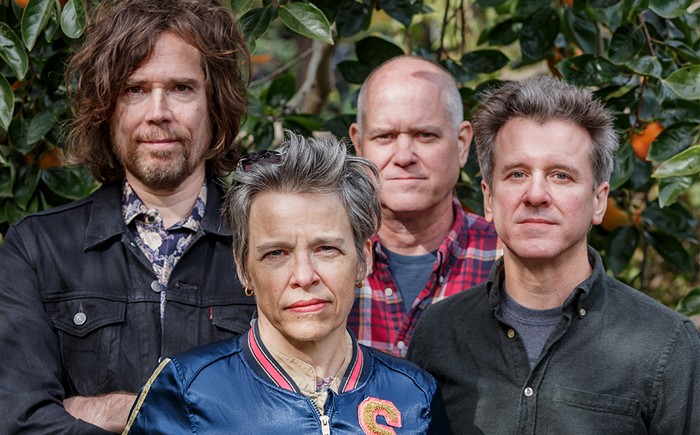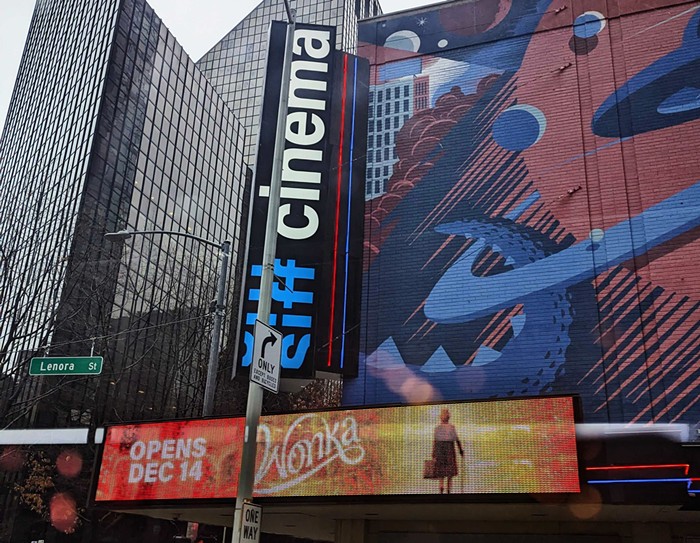
While most of Seattle was lamenting the impending loss of the Showbox, a quiet corner of the Internet landed on a different conclusion: Razing the theater is a good thing.
Those 44 stories of luxury apartment would mean more housing in a city starved of places to live—so if you’re in favor of affordable housing and urban density then you must be in favor of bulldozing the Showbox, the thinking goes.
The #KillTheShowbox point of view was argued by Josh Feit in a guest post on Erica Barnett’s The C Is For Crank website. Feit runs the numbers and decides that the benefits of a new $100-million apartment building would outweigh the cost of bulldozing one of the few large venues in the city. Destroying the historic theater would be a “net positive” for the city, Feit argues.
Feit makes some strong points about how the Onni Group’s plans would bring some benefits to Seattle but he ultimately misrepresents the housing equation the city is facing. Don't believe in Feit's false dichotomy: We can have affordable housing and the Showbox too.
Let’s breakdown Feit's analysis. There are three upsides if we #killtheshowbox, Feit argues. We'll get 442 units that will help ease our housing crisis (even though the majority of the units will likely be very expensive); he estimates that the building’s developer will give $5 million into the city’s affordable housing fund; and the building will only have 88 parking spaces.
That’s it. That’s what the city gets out of this in Feit’s opinion. $5 million, 442 luxury apartment units, and not too many more parking spaces.
But what is the cost of razing the theater? To Feit, the cost is zero. The city is “currently jammed with cultural spaces” and there are “plenty of places for 21-year-olds to go in 2018.” To bolster this odd claim, Feit misquotes an arts survey conducted by the city and county called SpaceLab NW. He says this survey counted 1,132 “cultural spaces” including about 120 “music venues" in the city. Those numbers are actually for the entire county, not the city, and the survey found only 821 "cultural spaces" in the city. What's worse, the number Feit quotes for "music venues" includes spaces that never play live music in front of an audience—like stereo stores and private radio stations.
So there aren't 120 other Showboxes in the city of Seattle. In fact, there's only a handful of music venues on its scale. And the Showbox is one of the city's largest nightclubs, offering a unique alternative to large theaters like the Paramount or the Moore.
But the biggest flaw in Feit’s argument is not that he gets the number of music venues in the city wrong but his mischaracterization of our city’s housing situation. Feit treats the land the historic theater sits on as the last of its kind, the only place the city can turn to when building dense housing.
This is false. There is plenty of room in our city to build more housing and the scarcity of developable land is entirely self-inflicted. Feit acknowledges this at the beginning of his tepid take:
My flip reaction to the news? If Seattle didn’t have strict zoning laws that make it impossible to build freely in other neighborhoods, maybe developers like Onni wouldn’t have to tear down beloved downtown institutions like the Showbox.
Perhaps Feit, who was the news editor at The Stranger back when The Stranger was good, has grown cynical after decades of watching city leaders refuse to do anything about our zoning laws. But the scarcity of developable land is a political problem, not an eternal one, and it demands a political solution. City leaders have the power to allow for more housing in every neighborhood. That they have refused to—thus far—isn't an argument in favor of bulldozing the Showbox. It's an argument in favor of bulldozing City Hall.
If our city actually believed in affordable housing we could quickly change zoning laws to make it so we could build enough new housing to accommodate the influx of Amazonians while still leaving enough housing for poor people and maybe a little bit of land left over for venues like the Showbox.
As a minimum, the City Council needs to finish changing zoning around the city’s “urban villages” as outlined in the city’s Mandatory Housing Affordability plan. If the entire plan is approved it will bring an estimated 6,000 affordable housing units for low-income people over ten years, but the City Council so far only passed a small fraction of the plan’s suggested zoning changes.

But even the expansion of urban villages in the Mandatory Housing Affordability plan touches only a small fraction of the city's exclusionary, single-family zoning. If we as a city decided we really wanted to make this place affordable we would greatly expand where multi-family housing can be.
When I was reading Feit’s take I couldn’t help but think of a line from this essay (“As goes the Showbox, so goes Seattle”) by longtime Seattle music writer Charles R. Cross for Crosscut. In the midst of a poignant essay (overlook the terribly cliched headline) about the value of the Showbox, Cross rhetorically asks “How much of Seattle should we save or should we develop the site of every single-story building in the city as long as there is economic demand?”
Cross’s question betrays his ignorance about housing in the city. Developers are so hungry to develop the land the Showbox sits on partly because we are in fact not developing on the site of every single-story building in the city. Because we can't. According to The Seattle Times, “expanded housing is essentially banned” in 69 percent of the city where single-family zoning exists.
What is the connection to Feit? Well, both men are suffering from a lack of imagination. Feit resigns us to razing cultural landmarks for housing because we can’t convince city leaders to expand multi-family housing beyond its current confines. Cross holds all development in contempt because this latest apartment building will crush one of his favorite places to consume art.
Replacing a beloved theater with a $100 million apartment building is not the same as replacing a single-family house with a modest apartment building—but too many people in our city conflate the two and we end up stuck in a housing crisis.
The irony here is that the two flawed arguments feed on each other. If Feit’s argument wins and the Showbox is developed (which the odds appear to be in favor of) then the people in Cross’s camp will only further dislike all development and vote against expanding housing to areas where we need more of it. Which will only put more pressure on developable land that currently hosts artistic spaces and venues.
We need to fundamentally change how we develop our city, otherwise we'll keep losing beloved spaces for art and we'll keep reading dull arguments for why we need to do so.



















